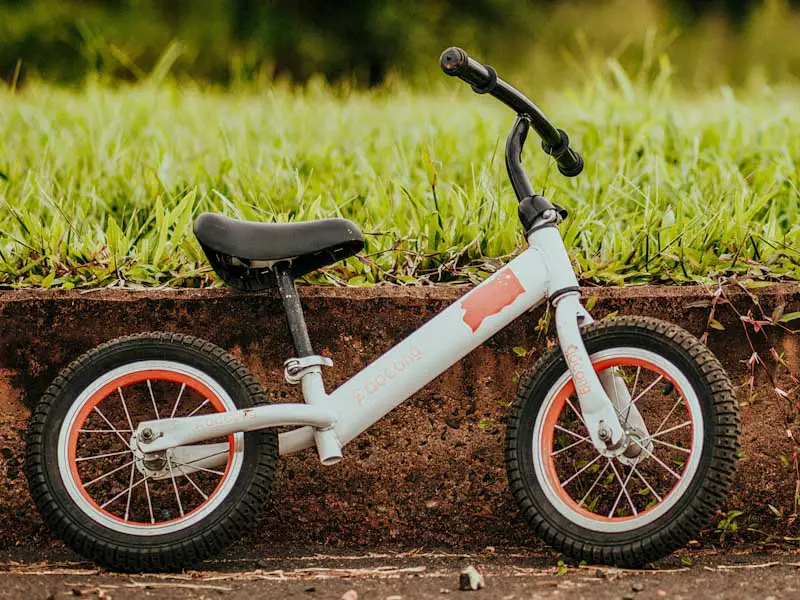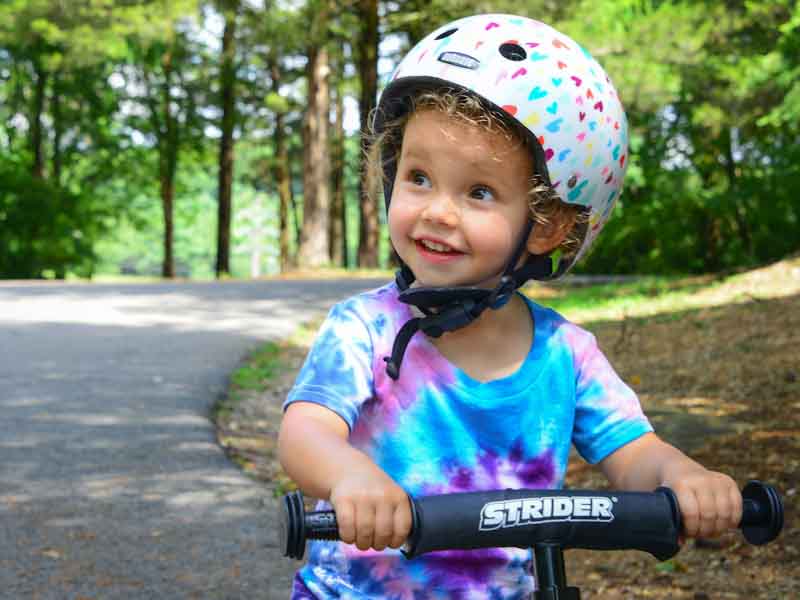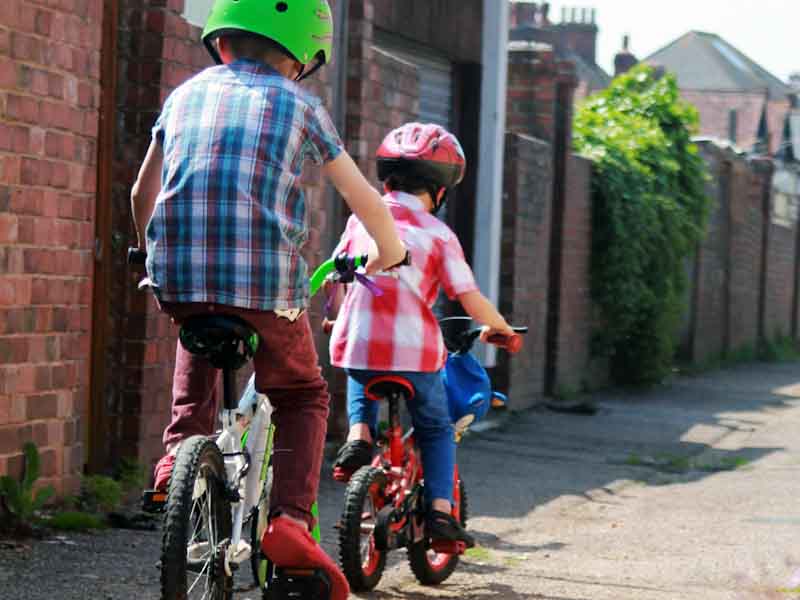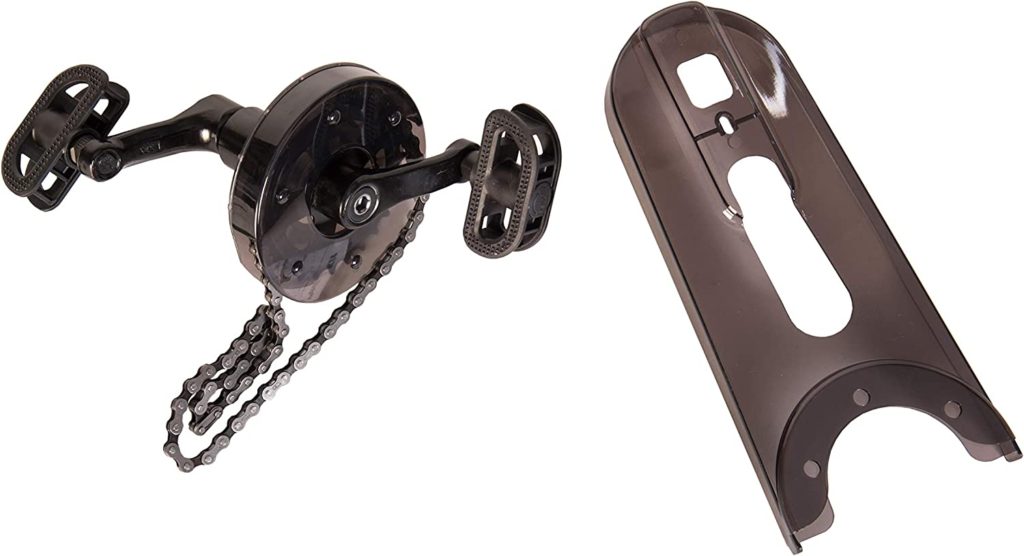
We may receive commissions from purchases made through links in this post, at no additional cost to you.
I recently taught my two boys how to ride a bike. After our first try, things didn’t go as smoothly as I hoped and I quickly realized I needed some help. After going down some major rabbit holes, I learned a lot of best practices for teaching beginners. I also found some conflicting information especially when it comes to balance bikes vs pedal bikes. (And don’t get me started on training wheels.)
One the one side, there’s the balance bike. Balance bikes are an excellent way to learn to ride a bike. Every parent I spoke with that started with a balance bike gushes about them. On the other side, instead of buying a balance bike, you can convert a pedal bike into a balance bike. In theory, it can accomplish the same thing as a dedicated balance bike.
So which do I choose? Is it better to buy a balance bike or just convert a pedal bike?
Generally, an average balance bike will work best for a child 4 or younger. A child 5 or older is often going to fit a 16” bike or larger and pedal bike without pedals will be a better option. Removing the pedals is a temporary solution and an older child is more likely to begin pedaling sooner.
Let’s take a closer look at the two options to see when either bike can work best.
Related: Do I Really Need a Balance Bike? (Pros and Cons)
When Should You Buy a Balance Bike
Balance bikes are a fantastic option to teach very young children. They are designed to fit the physical needs and learning patterns of young children. Kids as young as 18 months old can begin to learn to ride a balance bike.

A balance bike is much more than a bike without pedals. Because the pedaling mechanism is gone, the bike seat can be set much lower. This helps accommodate the shorter legs of younger children and allows them to use their feet to push their bike.
Balance bikes are also much lighter. Some bikes come with foam tires and when you combine that with removing the pedaling mechanism, it removes a significant amount of weight. The ideal weight of a balance bike should be at most 30% of your child’s weight. This is important for young riders so they can easily handle moving around independently.
While many companies make a balance bike with larger wheels, the truth is they’re best suited for very young children. Most balance bikes have 12” wheels (with the occasional 14” and 16”). Strider (one of the earliest manufactures and an industry standard in balance bikes) recommends a 12” balance bike for children with an inseam of 12-20”. (You can check Strider’s sizing page here.) A 20” inseam is roughly a child that’s 3 ½ feet tall, the average height of a 4 year old.
Related: 10 Reasons to NOT Use Training Wheels (Do This Instead)

One of the biggest advantages of a balance bike is it fits the learning pattern of a young child. Kids get to walk around and explore on a balance bike, often learning to balance independently. All without the need for training wheels. Balance bikes are an excellent option for children 4 years and younger.
When Should You Use a Pedal Bike Without Pedals
So what about a pedal bike with the pedals removed? If balance bikes are so great, why not just start there? And if they make bigger balance bikes, why not buy that for an older child?
The truth is, at some point your child will outgrow a balance bike both physically and socially. When a child gets older, they are likely to see a balance bike as juvenile, especially when they see their friends riding pedal bikes. Once you child learns to balance, they’re going to want to move to a pedal bike.

Because your child is going to be bigger, they shouldn’t have any difficulty moving their feet around the crank. There are some YouTube videos available that show how to remove the crank, but honestly, it is not a necessary step. Unless you feel like removing, cleaning, and repacking bearings, just leave the crank on.
Removing the pedals is the best method especially on a 16″ bike or larger. This is a temporary solution meant to get your child pedaling on their bike fairly quickly. If your child is older, a pedal bike with the pedals removed can be the best option in the short term.
Once they learn to balance, pedaling quickly follows, and then they can grow with their pedal bike. A balance bike for an older child will quickly become unused once they learn to pedal. (Please note that if your child has special needs, a larger balance bike may be their best option.)
Turning a pedal bike into a balance bike is super easy. Find out how at Turn a Pedal Bike into a Balance Bike (In 5 Minutes or Less)
What About a Balance Bike With Pedals?
A balance bike with the option to put on pedals sounds like a great option, and depending on your situation, may work best for you.
Strider’s 14x Sport is a balance bike with larger, 14” wheels and has the option to add pedals later (the pedal conversion kit is sold separately). The 14” wheels can accommodate a child with a 16-23” inseam (between 3-6 years old).
The pedal option can extend the life of that bike for your child. And while the conversion kit is an additional $65 to a bike that costs $170 (at the cheapest), you don’t have to commit to purchasing the kit unless it’s a right option for you. If you child outgrows their balance bike before you buy the pedals, at least you had an amazing balance bike to learn on. For a lot of people though, a $235 price tag is a lot (and even more if you want your bike in Awesome Blue or Tangerine).
There are other brands that are becoming more available on Amazon, including one made by Bikeboy. They make options with 12”, 14”, and 16” wheel options, so you can get them for your child at both younger and older ages.
I personally have not tried Bikeboy and so I cannot make an honest recommendation, only to let you know that it is an option. It has a $160 price tag for the 16” version and includes pedals so it’s considerably less than the Strider 14X Sport. That being said, there re some mixed reviews and isn’t a well known bike company, especially compared to an industry standard like Strider.
Ultimately the best choice bike depends on your situation. A young child will work best with a balance bike, but if you already have a pedal bike, you don’t need to spend more money.
If I could go back in time, I would have gotten a balance bike when my oldest son was 2 years old. Since I didn’t know about balance bikes though, I waited and someone gave us a pedal bike. In the end, taking off the pedals worked like a charm.
Related: Should Kids Bike With or Against Traffic (And Why)
Related Posts
The big day has finally come. You bought your daughter or son a bike and it’s time for the first riding lesson. But don’t grab the bike and run outside quite yet - you’re going to want a plan....
Kids can learn to ride bike at any age. Personally, I was a late bloomer. As much as my older brother tried to teach me to ride a bike, I just struggled. I still have the memory of him pushing me on...



